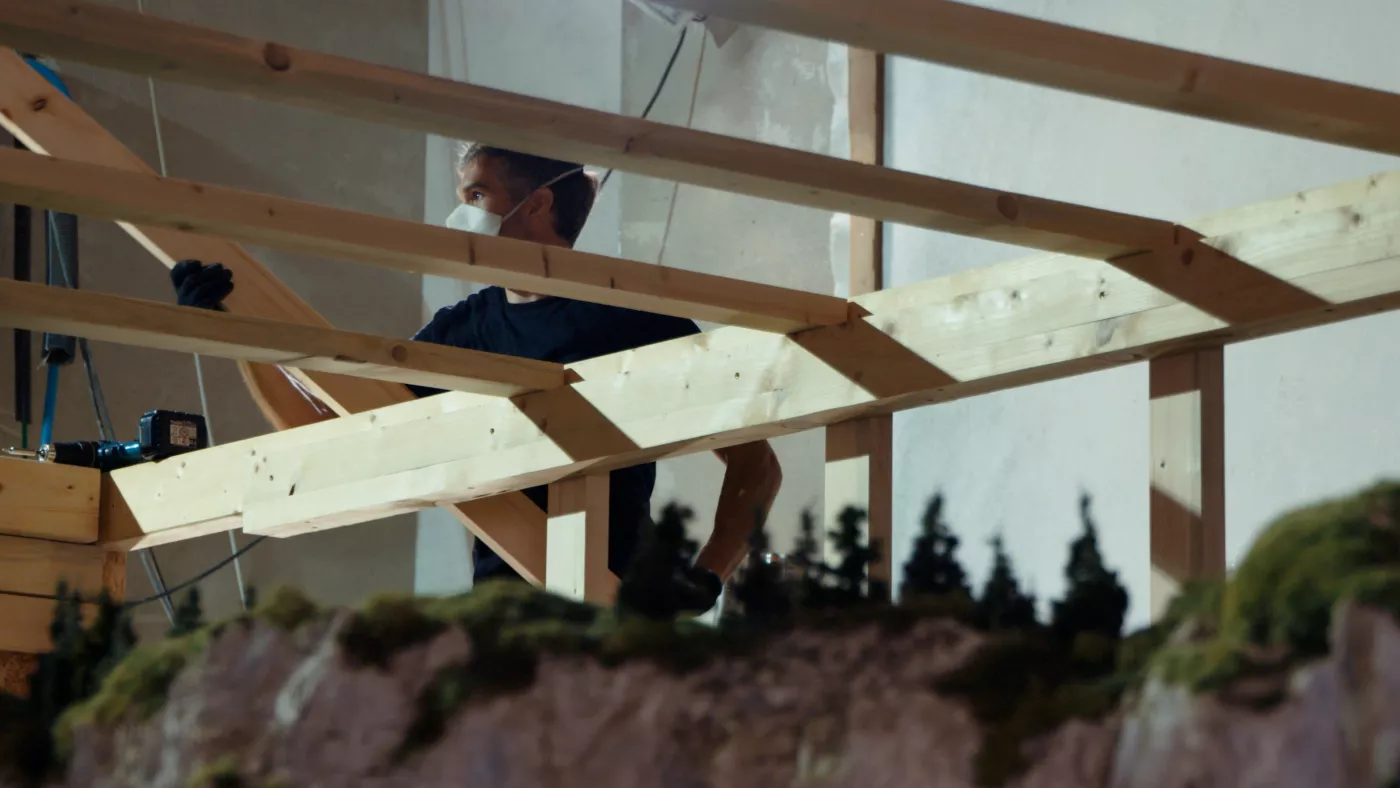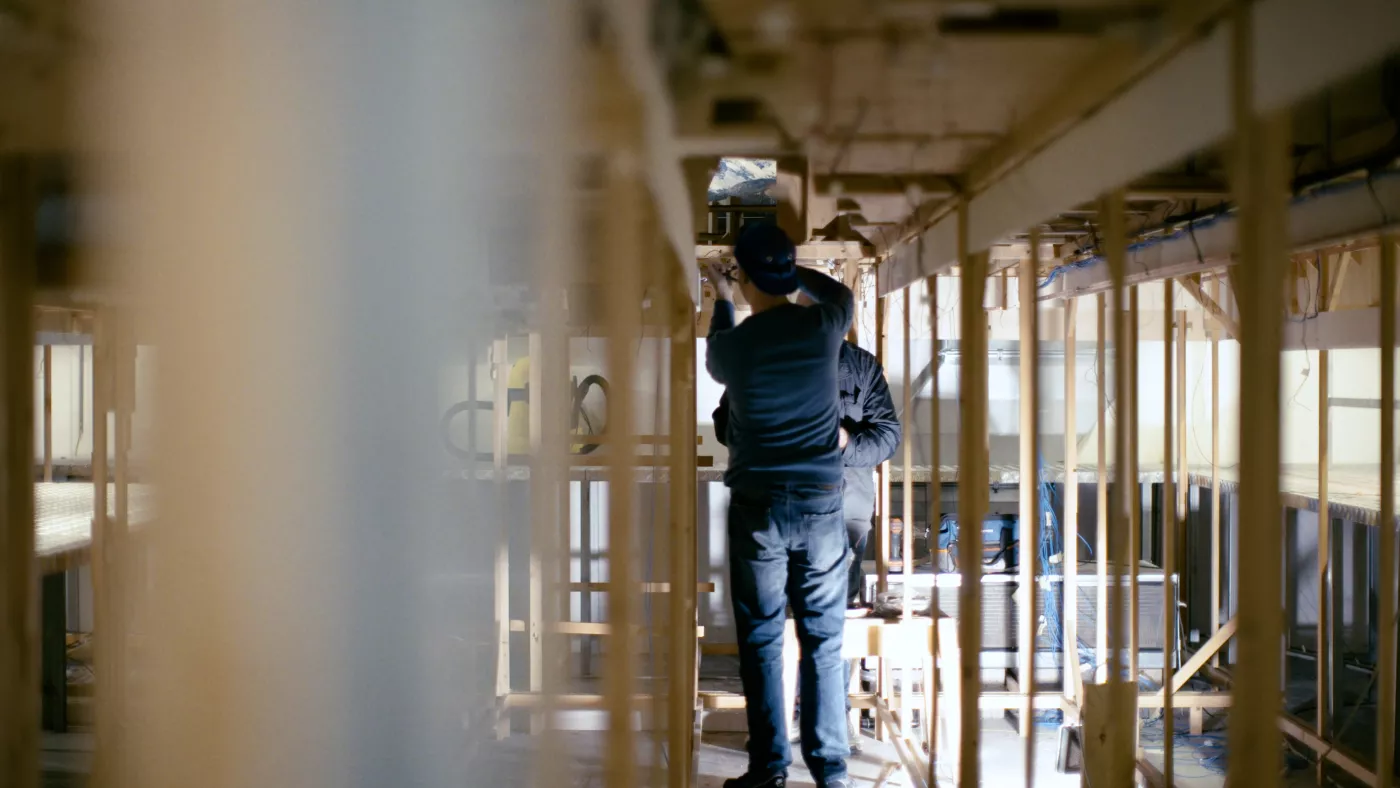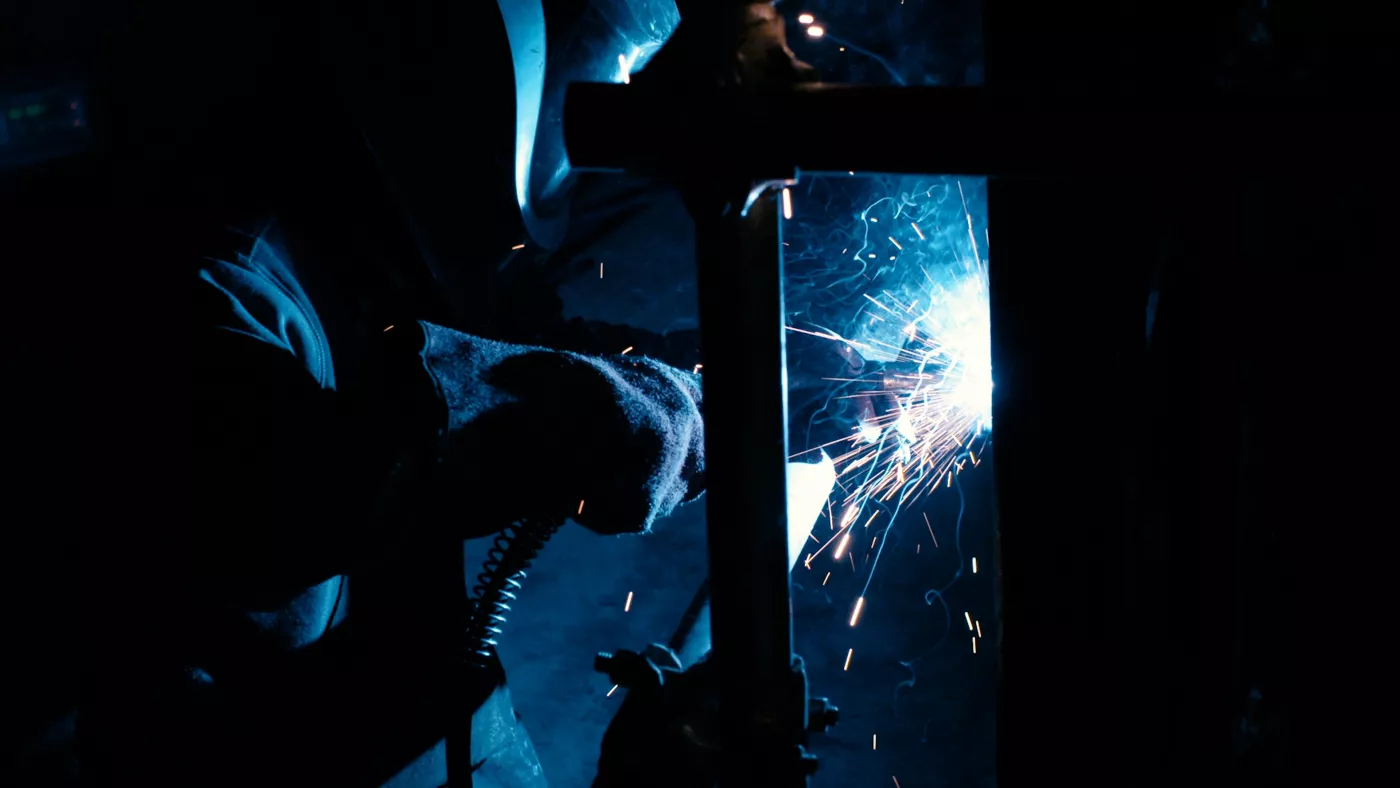The layout
HZERO came about as an evolving project, a progressive construction conceived to offer a uniquely captivating and immersive experience. From its name, which refers to a technical term used in modelling to define the scale but also recalls a hyper-technological dimension, the project combines creativity and dedication.
Its beating heart is a hand-crafted work of the highest level: the model railway conceived by Giuseppe Paternò Castello di San Giuliano and created over forty years of passionate work. In the HZERO layout, the mastery and dedication that have allowed the constant improvement of the model railway find a perfect dialogue with new technologies, producing a sensory setting that is born from the meeting between different creative languages.
The visual itinerary begins with the model railway, the protagonist of a genuine poetic choreography of lights, sounds and projections specially conceived to emphasise its scenic rendering.
The system of projections conceived by the Milanese studio Karmachina, in collaboration with curator Alberto Salvadori, takes up the details of the model and reinterprets them in an illustrative vein, through the techniques of illustration and stop motion graphics. The resulting animations amplify the thousand stories told by the model railway and project them in time and space, recalling the changing seasons and the different moments of the day. The fourth dimension is also rendered by the lighting system, conceived by light designer Angelo Linzalata, studied to suggest the impression of passing time through the sequence of different atmospheric events, from storms to snowfalls, from dawn to sunset.
The immersive setting of HZERO is completed and enriched by the soundscape created by the Tempo Reale research, production and museum education centre. The over fifty speakers of the diffusion system are designed to create precise and captivating sequences of ambient sound, completely in tune with the movements of the trains in the model railway and with the video-projections of Karmachina.
The spectacle offered by the model and by its setting becomes the starting point for the exploration of an uncontrollable passion, which from the original enthusiasm of its creator has spread to involve an entourage of friends and professionals united in the creation of a parallel universe. From the synergy between professional commitment and spontaneity there comes about HZERO, a space open to every type of audience and devoted to play in the noblest meaning of the term, as the capacity to be both serious and light at the same time.
VIRTUAL REALITY ON THE FIRST FLOOR WITH VISORS AND GREEN SCREEN
The HZERO museum experience continues on the first floor where, thanks to the magic of cinematic special effects and the use of new technologies, it is possible to explore the HZERO model in an even more immersive way.
If on the lower floor one encounters the incredible playful and architectural work in all its reality, on the upper floor it is possible to become a protagonist and play with the scenarios of the model, through two gaming stations with visors and screens and a green screen corner that allows one to take a photograph inside the settings of the model.
Wearing the visors, one drops in on par with the miniatures as they walk through the town's alleys among market stalls, balloon vendors, florists, cafes and porcelain stores. All this while remaining comfortably seated. With virtual reality it is possible to delve inside the digital twin of the model thus transformed into a video game. This version of the landscape was created by digital creator Stefano Concutelli, scanning the real one in H0 scale (1:87) and then modeling and animating it with various 3D programs.
The green screen technique, on the other hand, is one of the most widely used special effects in the film industry. Named for its bright green identifier, it allows any scenery to be superimposed in place of the colored background that magically fades away giving the illusion that the actors on stage are in an imaginary elsewhere. Once the scenery and people are superimposed, the special effect on the screen is born. In the green screen of the museum, the audience can play by simulating an interaction with some glimpses of the model railroad, taking a photo as a memory of the HZERO trip. The result will be the union of the two souls of the place: the memory of the former Ariston cinema and the playful dimension of the museum.




